
"All of my works put emphasis on the relationship with the viewer, and the relationship that affects the viewer. It is not about proving what is there, or what exists, but the works are more concerned with the relationship in effect or the intuitive communication of the ‘qi’." - Lee Kang-So
Gallery Hyundai is pleased to return to Frieze Masters with a solo presentation of Lee Kang-So, an extraordinary figure in the history of Korean contemporary art. Our stand presents a virtual landscape as a unified whole, providing an experience walking through an ethereal space surrounded by qi-charged paintings and organic installations.
Visitors will witness the coexistence of dynamic brushstrokes dashed in a single movement and large-scale paintings with bold margins. Seen are abstract and rough brushstrokes in multiple layers and more recognizable forms such as birds or boats appearing in paintings as icons since the late 1980’s, as well as the monotone paintings of greyscale or black and white that materialize the sense of infinite space upon flat canvas. Through these elements, viewers can enjoy the quintessence of Lee Kang-So’s painterly language that has unfolded over the last three decades.
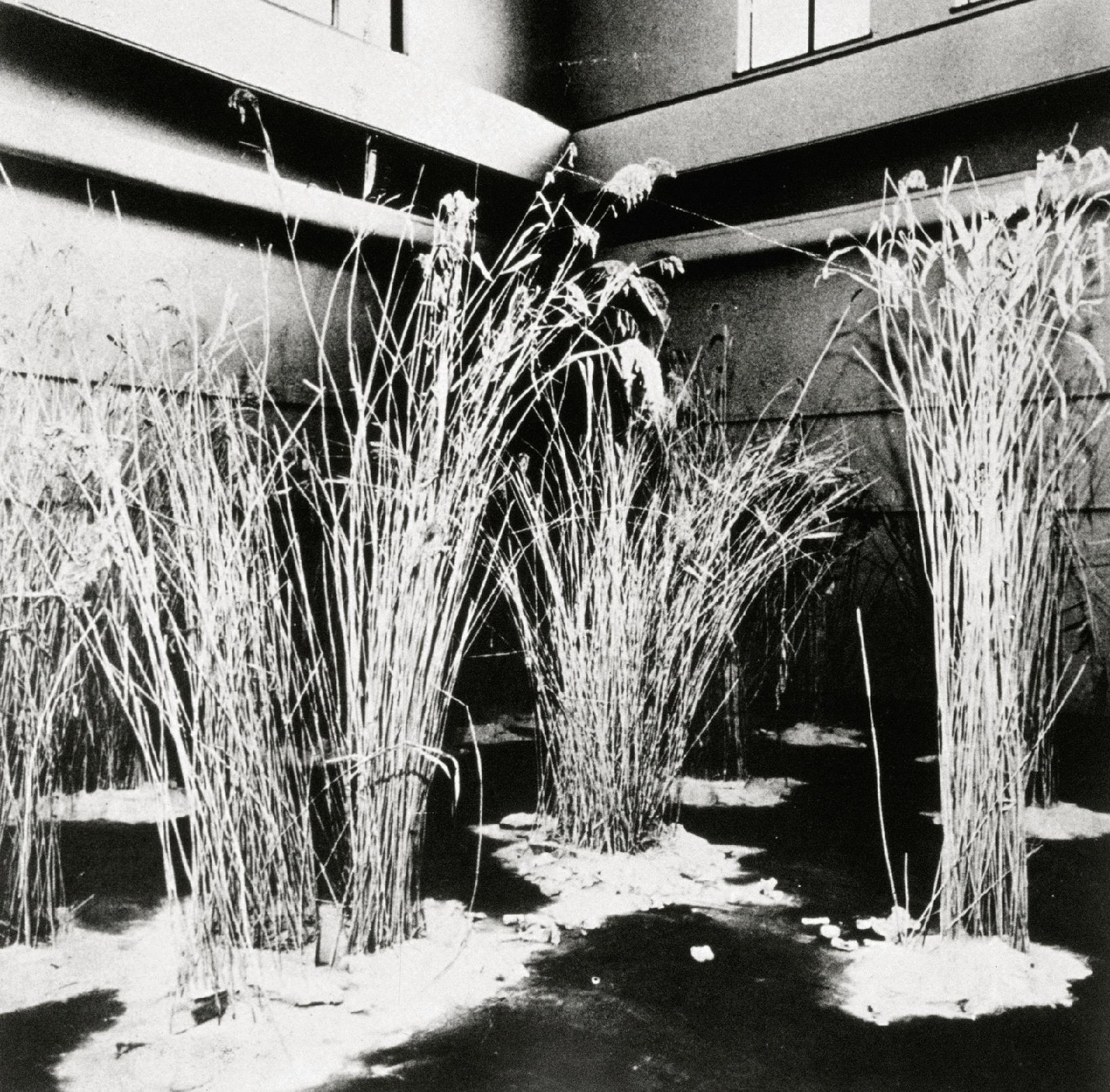
Void
1971, reed, plaster and paint, dimensions variable
Exhibition view at National Museum of Modern and Contemporary Art, Korea
© leekangso. all rights reserved.
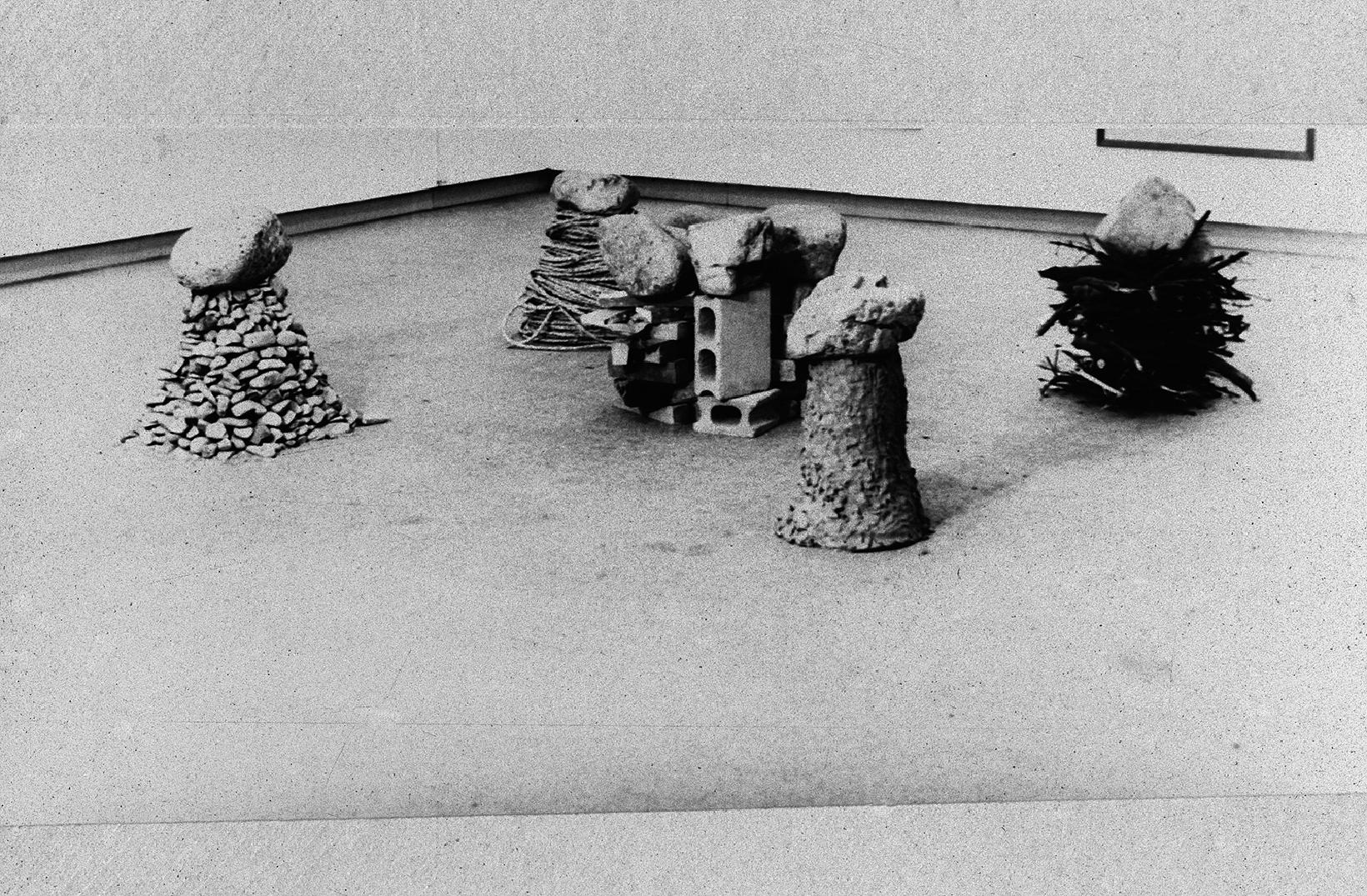
Paljindo
1981, mixed media, dimensions variable. © leekangso. all rights reserved.
Lee Kang-So is an indelible presence in the history of Contemporary Art. From the 1970s when he spearheaded new movements in experimental art, he has demonstrated a multidisciplinary practice across installation, performance, photography, video, print, painting, and sculpture, unbound to a particular trend or formal methodology. Pioneering works like Void (1971), Disappearance (1973), and Untitled-75031 (1975) from the 1970s shattered preconceptions about art as well as our perspective and attitude towards the wider world. At a 2018 solo exhibition Disappearance, Gallery Hyundai shed new light on the historical significance of such experimental artworks from the 1970s. The following year, Gallery Hyundai opened a special exhibition Becoming that encompassed Lee Kang-So’s early installation works, video, and more recent paintings and sculptures at Palazzo Caboto in Venice, Italy during time for the Venice Biennale, and received critical international acclaim in consequence.
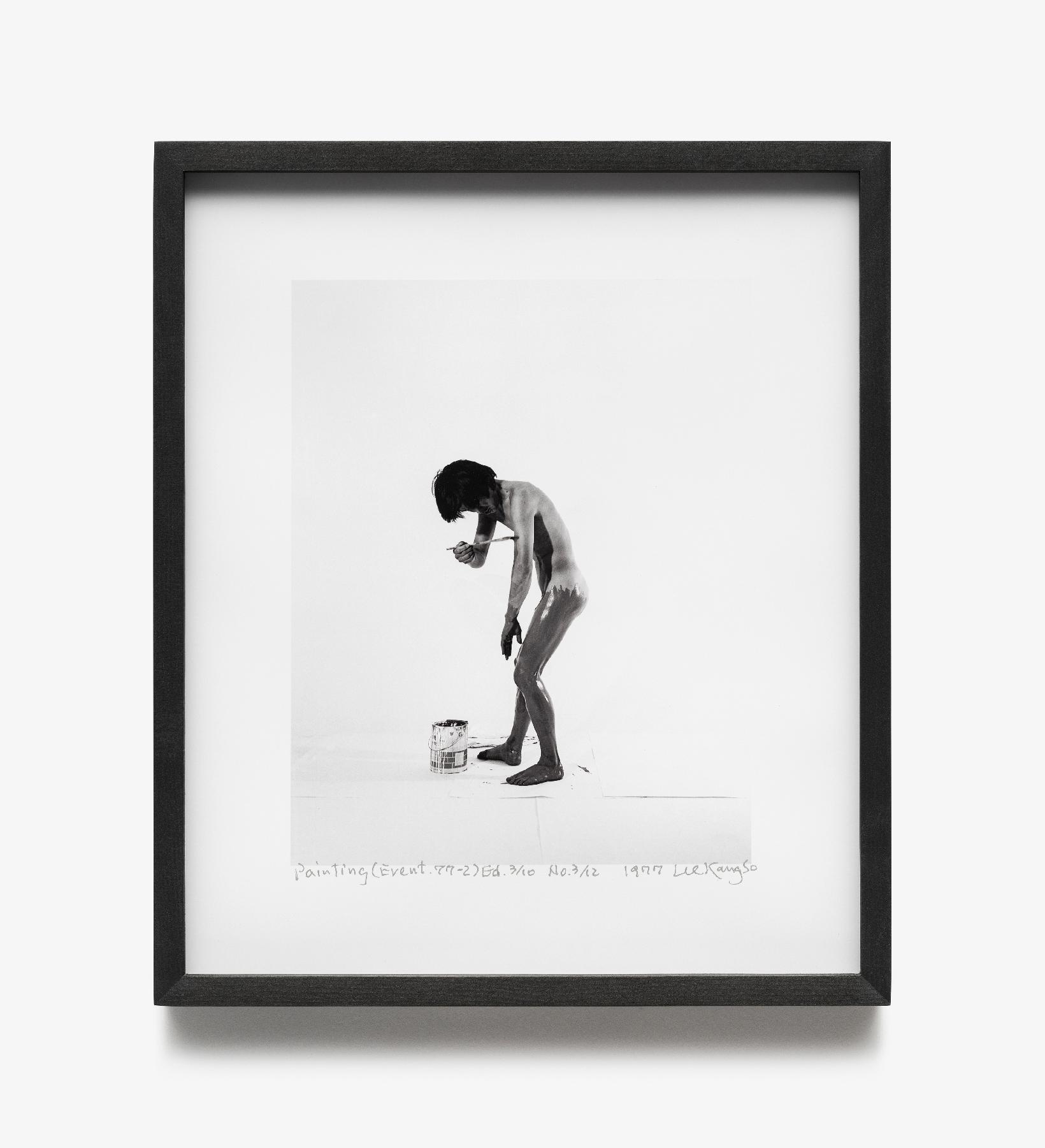
Painting (Event 77-2)
1977/2016, mixed media, c-print, 35 × 29.5 cm (ed. 3 of 10, each, 12 pieces), cloth : 186.5 × 43.5 cm
© leekangso. all rights reserved. Inquire
Majoring in Western painting in college, Lee Kang-So explored the question of “what is painting?” even in experimental performances, installations, video, print, departing from the existing definitions of painting. For instance, the Untitled (1975) series extracted threads from or ripped upon a canvas, the support of painting, to present both the materiality and flatness of the medium. In Untitled paintings, he added smears of paint upon serigraphy of silkscreened paint tubes, ashtrays, paint cans, or stills from his own video work.
Painting (Event 77-2) executed in 1977 is a performance-based painting installation. He painted his own naked body with a brush, followed by wiping away the paint with raw canvas, and laid the canvas on the floor and existed as a photography-installation for the remaining exhibition. Painting 78-1 (1977) that filmed an act of “painting” as he gradually painted a monitor from inside out, reinterprets traditional painting through a contemporary lens as one of the oldest mediums, revealing and objectifying the real substance of an illusory image.
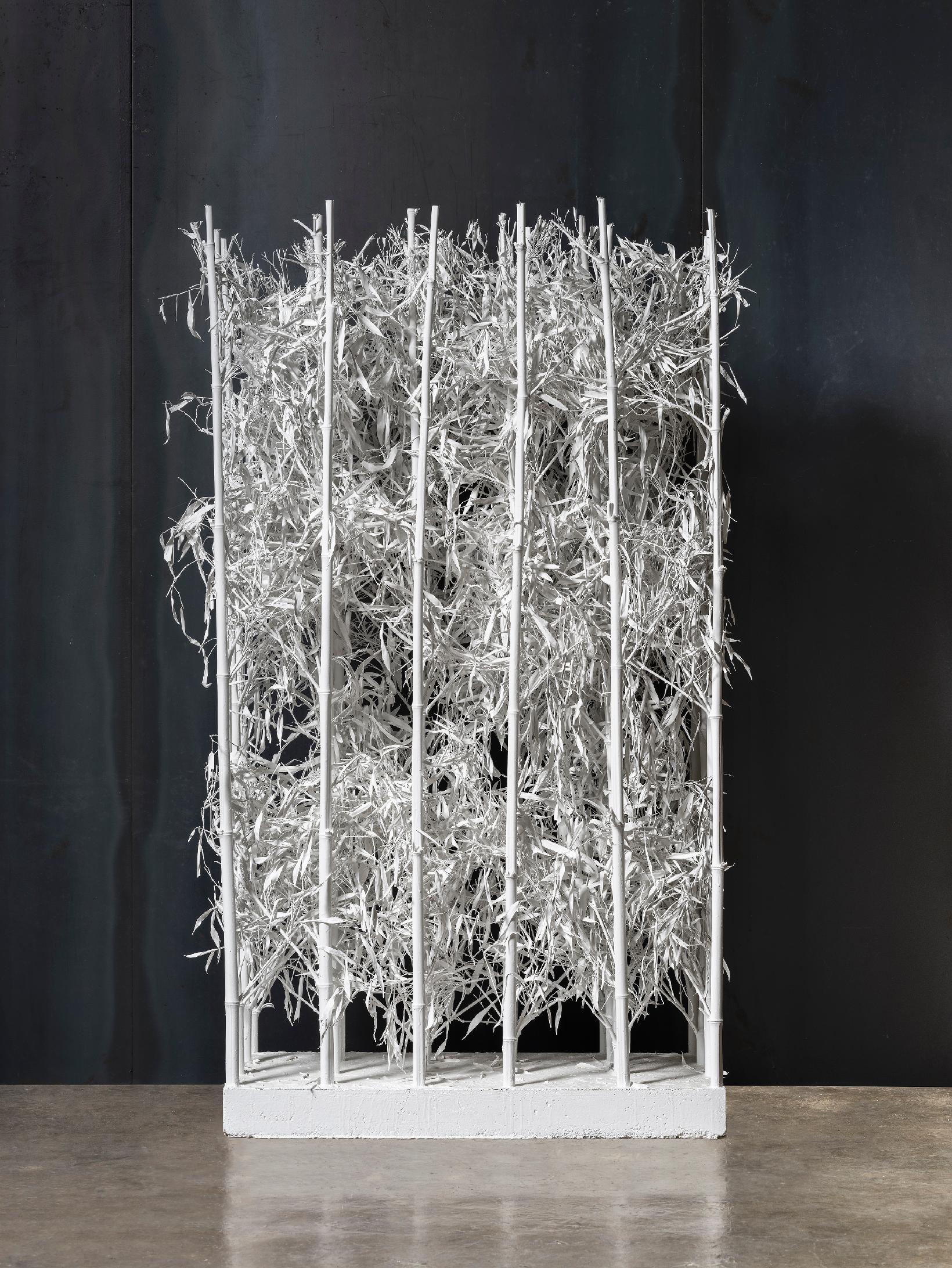
Bamboo
1972/2021, bamboo, cement, paint, plaster, 93 × 52 × 176(h) cm
(Ed. 3 of 8) © leekangso. all rights reserved. Inquire
It is from 1985 while he was a resident artist at the State University of New York (SUNY) that he started to “paint pictures” with paint and brush. What followed were liberated, rough, rhythmical brushstrokes plowing the picture plane, forms existing in the subtle space between figure and abstraction, horizontal compositions, and works where blues and greys mingle like a close-up of natural scenery such as forests or rivers. Afterwards, he continued to experiment with images by dividing a monotone background and presenting formal structures like houses and boats and an abstract or patterned field of rough brushstrokes at the same time. In the late 1980’s, Lee Kang-So’s signature visual language takes place: buoyant forms made of a few spare strokes resembling the Chinese character “乙” or a ghost, yet reminiscent of flocks of birds or deer, appearing out of nowhere amidst a boundless monotone background of blue, grey, or white.
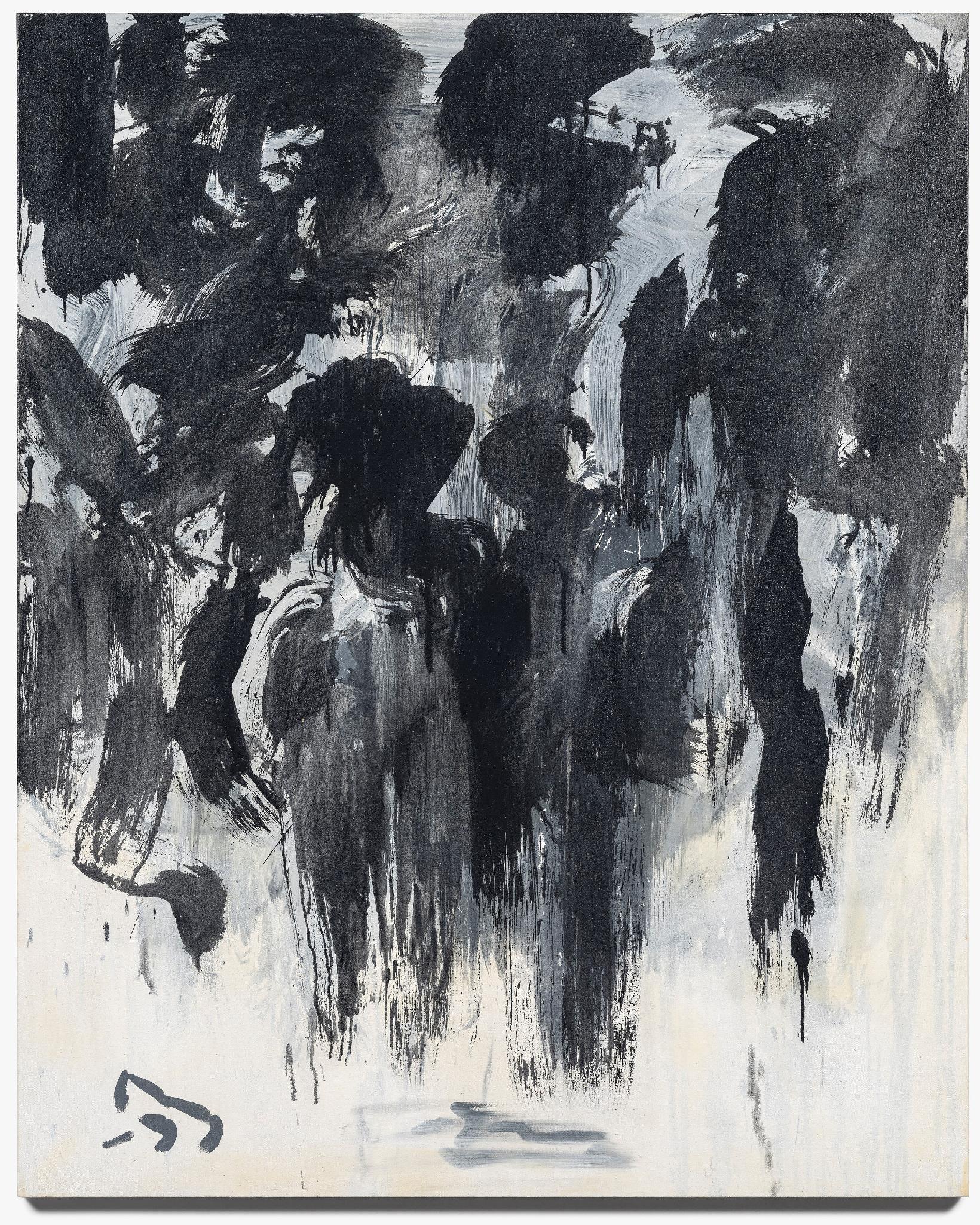
From an Island-99164
1999, acrylic on canvas, 162 × 130.3 cm
© leekangso. all rights reserved. Inquire
From the mid- to late 1990’s, works like From an Island or From a River mark the shift from Untitled to poetic and lyrical titles inspired by natural motifs, where the fewest, minimized brushstrokes on the verge of not being drawn at all echo natural phenomena like water, clouds, rain, and storm.
Shangrila and Emptiness series released since the mid-2000s highlight both the simplicity and vigor of strokes as they meet the images of birds or boas. From the mid- and late 2010’s to the present, the artist has been working on a series of paintings entitled Serenity. Offering an unforgettable visual experience that merges the beauty of margins dating back to East Asian painting with brushstrokes retaining the artist’s own breath, rhythm, and bodily gestures, Serenity is a lucid window to Lee Kang-So’s creative world. On the series, he emphasizes that “when I do brushwork with a clear and bright state of mind, the audience who sees it also will be able to share a sense of ‘serenity.’” Art historian Heekyung Song who contributed an essay to the exhibition catalogue interprets that Lee Kang-So’s Serenity series is “an art of oneness between poems, calligraphy, and painting, condensing the common qualities of the three genres: connotation, lingering, and spirit.”
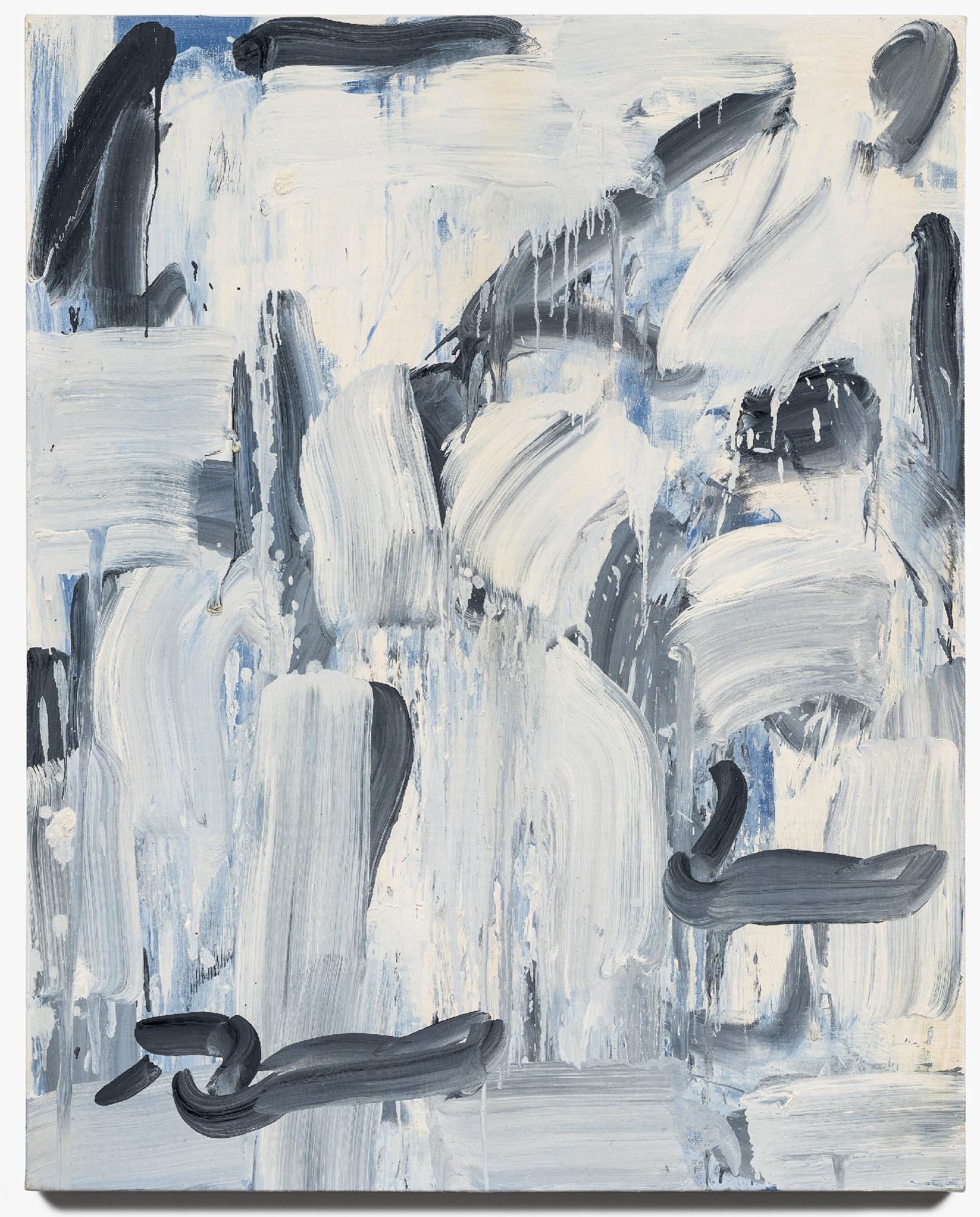
From an Island
1999, acrylic on canvas, 91 × 72.7 cm
© leekangso. all rights reserved. Inquire
The main wings of the stand features two authentic pieces from From a River (1999) series. These works illustrate aspects of qi (氣), or energy flow, that the artist intended to convey. Indeed, one of his major tasks was to visualize the energy of all being. He has always believed in the existence of an invisible energy and continuously strove to document it in image. From a River series, first presented at Galerie des Ponchettes in Nice, France, leaves traces of numerous impassioned brushstrokes of various density, all passing through the canvas swift and smooth. Perhaps because of the title, the works also appear like abstracted mountain-and-water landscape or the furious roar of a river.
The interior space focuses on various riffs on bold brushstrokes and emptiness surrounded by large-scale paintings and organic installations. Lee Kang-So excludes calculated or premeditated thought as much as possible; leaving a series of strokes to sensations of his hand holding the brush and natural rhythm of breath, he places every stroke without taking a moment of rumination. He uses the East Asian brush because the longer length of it than that of Western brush more dramatically interacts with and reacts to the user’s mind and movements. The countless kinds of brushstrokes left at a state of a union among brush, hand, emotion, and spirit then invite the viewers into a world of boundless imagination.
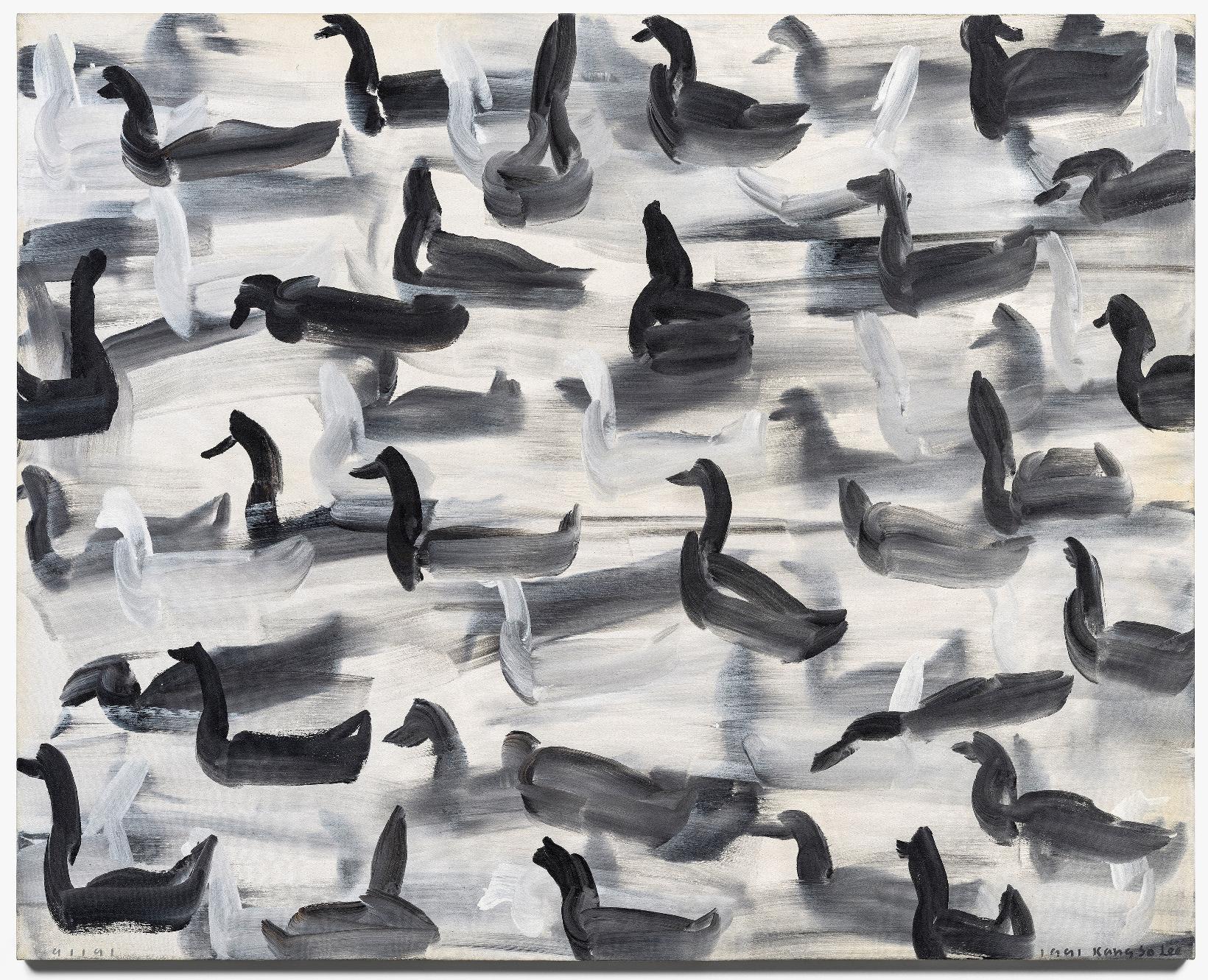
Untitled-91191
1991, acrylic on canvas, 130.3 × 162 cm
© leekangso. all rights reserved. Inquire
Simple yet fluid symbols like birds, deer, boats, mountains, or houses appear as mere few lines that have barely been drawn. These images coexist with abstracted brushstrokes of varying colors and density, forming a dual structure in Lee Kang-So’s paintings. By juxtaposing objects symbolizing nature and civilization with freely drawn strokes, he captures one essence of natural life that is always in the process of creation, not one as limited by our preconceptions. Hoping to open multiple avenues for interpretation by minimizing the artist’s intervention. He adds that “it doesn’t matter if you see it as a duck, a boat, or a deer. They are all illusions perceived then dissipated at the eye of the beholder. I only try to have each person decide, feel, and experience as one’s own”.
As Lee Kang-So himself characterizes his works as “pictures that were drawn,” he avoids subjective expressions of emotions, intention, or a unidirectional solution. Instead, he prefers to traverse between the visible and invisible, particles and energy, here and there, being and non-being, me and you, all in a moment of space and time like a wise spirit. His unpredictable brushstrokes enlivened with the living energy provide viewers with an alternate perspective of seeing the world. In other words, Lee Kang-So’s paintings, or artworks, are a result of ceaseless efforts to escape the modernist view of the world as immutable and self-explanatory, revealing the truth of all being as always buoyant and pulsating. They are at the same time a philosophical question asking whether the world equals reality, and an answer to how we can visualize this world stepping outside our own human perspective.
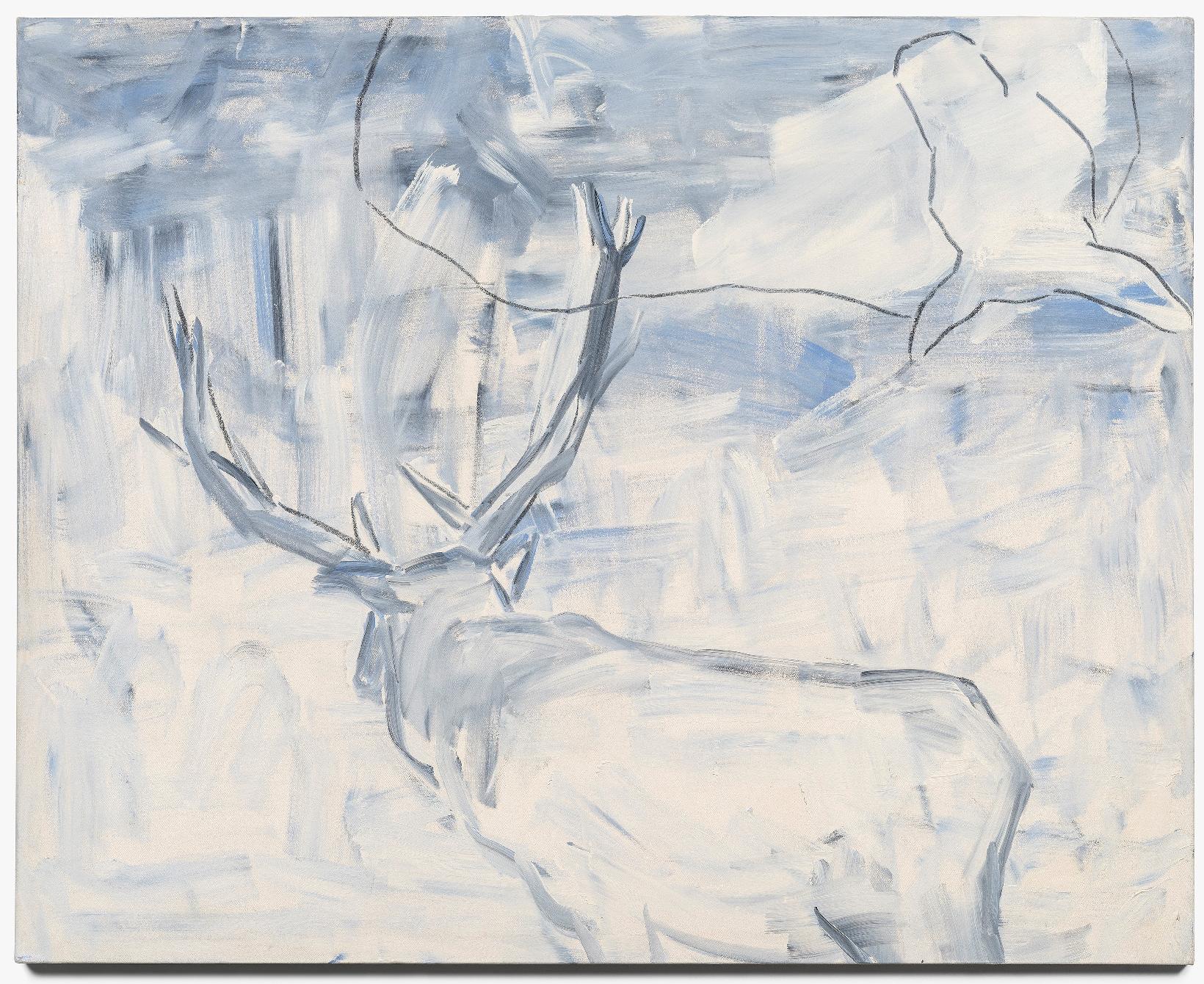
Untitled-90151
1990, oil on canvas, 130.3 × 162 cm
© leekangso. all rights reserved. Inquire
갤러리현대는 <프리즈 마스터즈 2022>에 이강소의 솔로 부스를 선보인다. 이번 솔로 프리젠테이션은 예술을 둘러싼 환경과 미술사를 가로지르는 첨예한 문제의식을 담은 한국 실험미술 선구자의 대표작을 시기별로 재조명해온 기획의 연장선에 있다. 갤러리현대의 부스 E1에서 이강소 작품의 정수를 만끽할 수 있다. 작가의 “획” 회화와 설치, 사진 작품을 통해 나-자연-우주의 합일을 추구했던 이상적 산수의 현장을 산책하는 듯한 경험을 선사할 예정이다.
한국 현대미술의 거장인 이강소는 실험미술의 새로운 움직임을 이끌던 1970년대부터 오늘에 이르기까지, 설치, 퍼포먼스, 사진, 비디오, 판화, 회화, 조각 등 매체에 구애받지 않는 왕성한 창작 활동을 펼쳤으며, 특정 사조나 형식적 방법론에 안주하지 않았다. 1970년대 발표한 선구적 작품은 미술의 고정관념을 타파하고, 세계를 바라보는 우리의 시각과 태도에 가차 없는 균열을 가했다. 자연 그대로의 갈대를 잘라 시멘트에 고정하고 그 위에 흰 물감을 뿌린 <여백>(1971), 명동화랑에서 열린 첫 개인전에서 화랑을 말 그대로 주막으로 전환한 <소멸(선술집)>(1973), 파리비엔날레에서 닭의 발목을 줄로 묶고 바닥의 흰색 가루를 밟으며 움직인 닭의 흔적을 작품으로 제시한 <무제‒75031>(1975), 사슴의 뼈를 모은 <무제‒75032>(1975) 등과 같은 개념적 설치 미술 작품은 ‘생성과 소멸’이라는 심오하고 철학적인 주제를 담고 있다.
프리즈 마스터즈 2022에서는 이강소의 독특한 세계관이 작품으로 어떻게 구체화 되었는지를 1970년대부터 1990년대까지 완성된 작품을 통해 조망한다. 그는 겉으로 보기에 자명한 세상을 현실에서 꿈과 같다고 본다. “나에게 이 세상은 엄청난 미스터리로 가득 차 있다. 그것은 동시에 어지러울 정도로 복잡하고 두려운 것이다. 이 끝없는 탄생과 죽음의 연속은 우주의 가장 먼 구석까지 뻗어나갈 것이다.” (작가 노트) 어린 시절부터 배운 동아시아 철학과 현대의 양자역학에 기반을 둔 이러한 통찰은 그의 작품마다 매끄럽게 연결되어 있다.
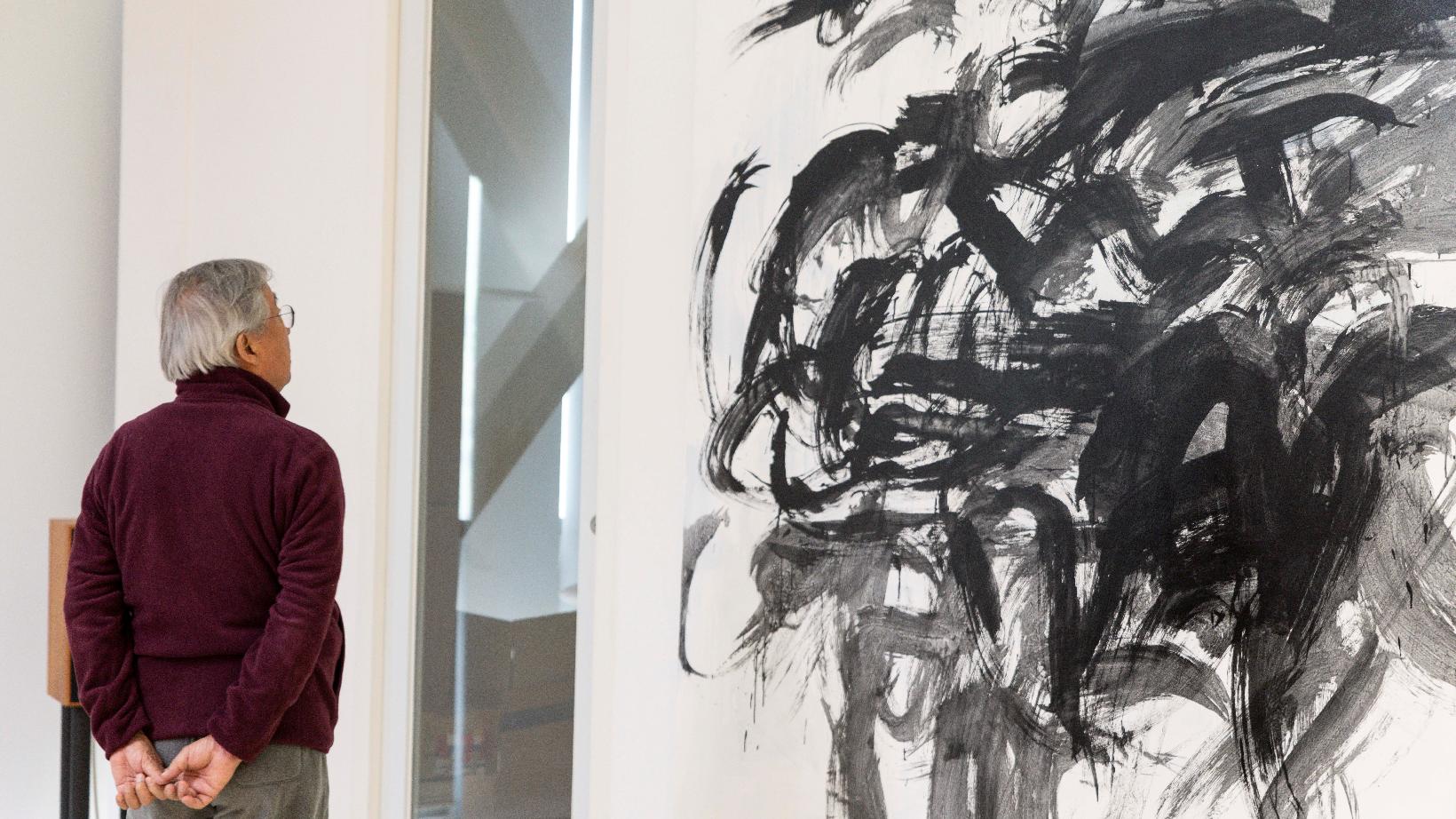
이강소는 대학에서 서양화를 전공한 후 실험적인 퍼포먼스, 설치, 영상, 판화 형식을 실험하며 “회화란 무엇인가?”라는 문제를 집요하게 탐구했다. <Untitled>(1975) 시리즈는 회화의 지지대인 캔버스에서 실을 추출하거나 찢어서 매체의 물질성과 평면성을 동시에 제시한다. 1977년 실행한 퍼포먼스 기반의 사진-설치 작업인 <회화(이벤트 77-2)>에서 작가는 자신의 벗은 몸에 페인트를 붓으로 칠한 다음, 캔버스 천으로 몸에 묻은 물감을 닦아 내고 그 천을 전시 동안 사진-설치로 전시했다. 영상 <회화 78-1>(1977)은 '회화'하는 행위를 촬영한 작품이다. 작가는 마치 모니터 안쪽에서 화면을 차곡차곡 채색하는 듯한 장면을 연출하며 전통적 매체인 회화를 비디오라는 현대적 렌즈를 통해 재해석하고, 허상의 실체를 드러내고 객관화하고자 했다. 또한 영상 <회화 78-1>의 정지 장면이나 재떨이, 물감통이나 물감 튜브 등 일상적이고 미술의 재료가 되는 사물을 실크스크린한 세리그라피에 물감의 흔적을 추가하는 등의 회화적 실험을 지속했다.이강소는 뉴욕주립대에 레지던트 작가로 상주하던 1985년경부터 붓과 물감을 사용하는 회화를 본격적으로 시작하게 된다. 화면을 쟁기질하는 듯한 자유롭고 거칠고 리드미컬한 스트로크, 구상과 추상의 미묘한 공간에 존재하는 간결한 형태, 숲이나 강과 같은 자연경관을 클로즈업하듯 청색과 회색이 뒤섞인 수평적 구도의 작품들이다. 이후에도 그는 모노톤의 배경을 둘로 나누고 집과 배와 같은 형태적 이미지와 거친 스트로크의 추상적이고 패턴화된 화면을 동시에 한 화면 위에 제시함으로써 이미지 실험을 계속했다. 1980년대 후반에는 이강소의 시그니처 언어 - 한자 "乙" 또는 유령과 유사하지만 새나 사슴을 연상시키는 파란색, 회색 또는 흰색의 경계가 없는 단조로운 배경 가운데서 갑자기 나타나는 단 몇 번의 붓질로 만들어진 부력 있는 형태 - 가 등장한다.
작가는 1990년대 중후반부터 자연적 모티브에서 영감을 받은 시적이고 서정적인 제목인 <섬에서> 또는 <강에서> 연작을 발표한다. 최소한의 스트로크로 그려낸 물, 구름, 비, 폭풍과 같은 자연 현상을 연상시키는 화면이 시각적 특징이다. 천 년도 훨씬 넘은 동아시아의 수묵화로 거슬러 올라가는 여백의 아름다움과 작가 자신의 숨결, 리듬, 몸짓이 고스란히 담긴 붓놀림을 결합한 잊히지 않는 시각적 경험을 제공한다. 최근까지 이어지는 <청명> 시리즈는 이강소의 창작 세계에 대한 명료한 창이다. 이 연작에 대해 그는 “맑고 밝은 마음으로 붓질을 하면 보는 관객들도 '평온함'을 공유할 수 있을 것”이라고 강조한다. 미술사가 송희경은 이강소의 <청명> 연작을 “시, 서예, 회화의 일체감으로 함축, 여운, 정신의 세 장르의 공통점을 압축한 예술”이라고 해석한다.
갤러리현대의 <프리즈 마스터즈 2022> 부스 E1의 입구에 놓인 <강에서> 연작 두 점이 관객을 가상의 풍경 속으로 안내하듯 맞이한다. 두 작품은 작가가 붓을 통해 전달하고자 하는 기(氣)의 흐름을 강렬하게 보여준다. 실제로 그의 주요 목표 중 하나는 모든 존재의 에너지를 시각화하는 것이다. 그는 항상 보이지 않는 에너지의 존재를 믿고 그것을 이미지로 기록하기 위해 끊임없이 노력해왔다. 프랑스 니스의 갤러리 데 폰셰트(Galerie des Ponchettes)에서 처음 발표한 바 있는 <강에서> 시리즈는 다양한 밀도의 수많은 열정적인 붓놀림의 기록이 모두 빠르고 매끄럽게 캔버스를 통과하는 흔적을 남긴다. 제목 때문에 추상화된 산과 물의 풍경이나 강물의 맹렬한 포효처럼 보이기도 한다.
부스의 안쪽 공간은 여백과 강렬한 스트로크 그리고 몇 번의 획만으로 드러나는 이미지로 구성된 회화와 유기적인 재료로 만들어져 멈춘 시공간을 떠올리게 하는 설치가 독특한 공간을 연출한다. 이강소는 캔버스 앞에서 계획적인 생각을 최대한 배제한다. 붓을 잡고 있는 손의 감각과 자연스러운 호흡의 리듬에 일련의 스트로크를 남겨두고, 그는 한순간의 망설임도 없이 모든 스트로크를 배치한다. 이를 위해 작가는 동양의 붓을 사용한다. 그 이유는 서양 붓보다 길이가 더 길기 때문에 사용자의 움직임과 더 극적으로 상호 작용하고 반응하기 때문이다. 붓과 손과 감정과 정신이 하나가 된 상태에서 남겨진 무수한 스트로크는 관객을 무한한 상상의 세계로 초대한다. 캔버스 왼쪽에서 오른쪽으로 던지는 획, 짧고 길었다가 다시 짧게 숨 쉬는 획, 캔버스에 맞서는 듯 격렬한 파도를 불러일으키는 가로세로 획의 리듬을 생생하게 하는 선율의 획, 방향을 바꾸어 평면을 이루는 획. 한 획 한 획이 미학적인 이 모든 획은 전통 문인화의 전통을 계승하면서 현대 회화의 언어학을 확장한다.
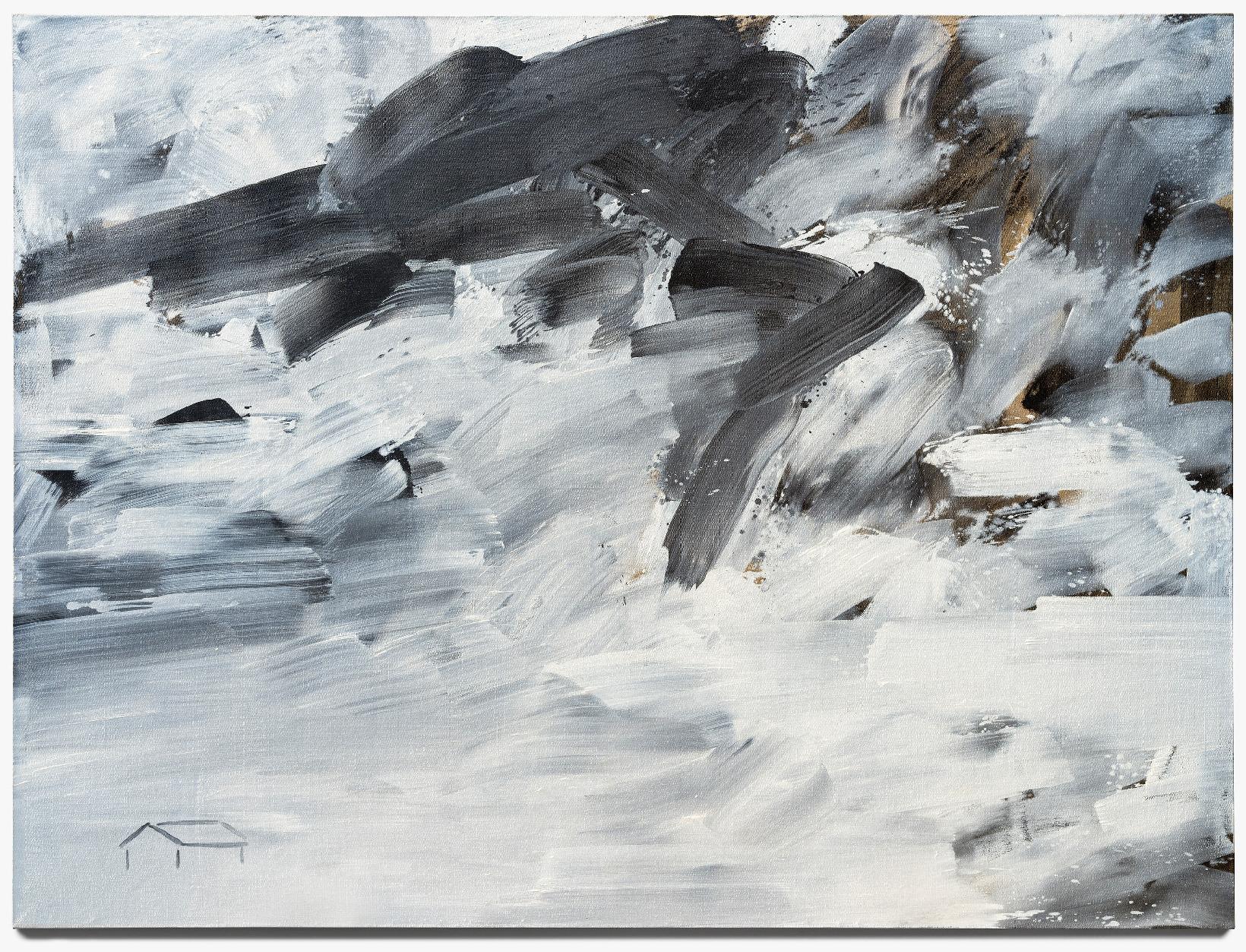
Untitled-96204
1996, oil on canvas, 218.2 × 291 cm
© leekangso. all rights reserved. Inquire
새, 사슴, 배, 산, 집과 같은 단순하지만 유동적인 기호는 거의 그려지지 않은 몇 개의 선으로 나타난다. 이 이미지들은 다양한 색과 밀도의 추상화된 붓놀림과 공존하며 이강소의 회화에서 이중구조를 이룬다. 자연과 문명을 상징하는 오브제들을 자유롭게 그린 획으로 병치함으로써 우리의 선입견에 얽매이지 않고 항상 창조의 과정에 있는 자연 생명의 본질을 포착한다. 그는 “(작품에 등장한 형상을) 오리로 보든, 보트로 보든, 사슴으로 보든 상관없어요. 그것들은 모두 지각된 후 보는 사람의 눈에서 사라지는 환상입니다. 나는 각 사람이 자신의 것으로 결정하고 느끼고 경험하도록 노력할 뿐”이라며, 작가의 개입을 최소화하여 다양한 해석의 길을 열어 준다.
이강소는 자신의 회화를 '그려진 그림'이라 강조한다. 작가의 주관적인 감정의 표현이나 의도, 일방적인 해석을 피한다. 대신 그는 현명한 영혼처럼 시간과 공간의 순간에 보이는 것과 보이지 않는 것, 입자와 에너지, 여기와 저기, 존재와 비존재, 나와 당신 사이를 가로지르는 것을 선호한다. 생동하는 에너지가 넘치는 그의 예측할 수 없는 붓놀림은 보는 이로 하여금 세상을 바라보는 또 다른 시각을 제공한다. 이강소의 작품은 불변하고 자명한 세계관에서 벗어나 항상 활기차고 맥동하는 모든 존재의 진실을 드러내고자 하며, 모더니즘적 시선에서 벗어나기 위한 끊임없는 노력의 결과이다. 이 세상의 실체를 향한 철학적 질문이자, 이 세상을 인간의 관점에서 벗어나 어떻게 시각화할 수 있는지에 대한 답이다.